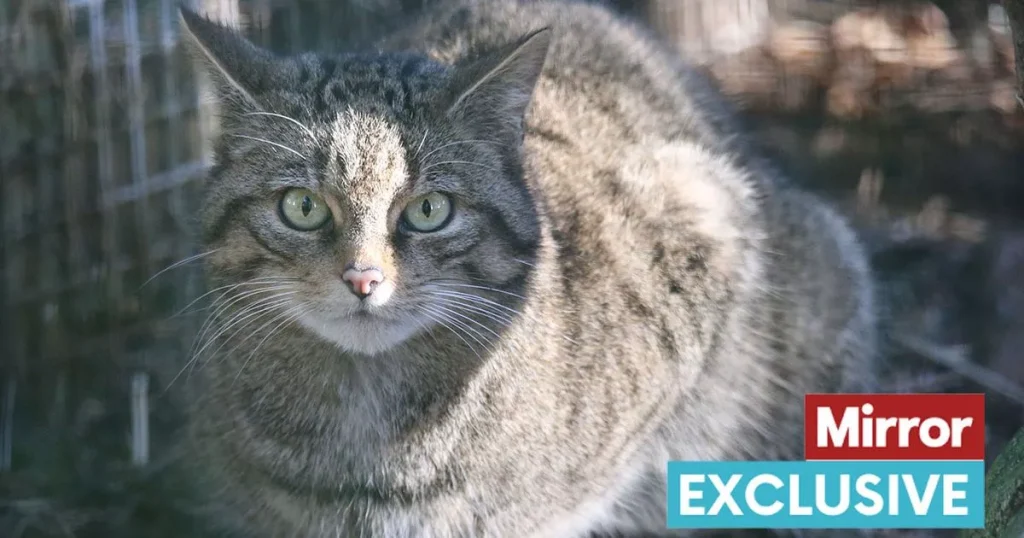A reintroduction scheme is aiding in the recovery of the critically endangered Scottish wildcat, our most endangered mammal due to habitat loss, hunting, and breeding with domestic cats. The species, once widespread in Britain, is now confined to remote parts of Scotland with less than 400 individuals left in the wild. Thanks to a program that reintroduced 19 Highland wildcats into the wild, these elusive cats are adapting to life in their natural habitats, hunting for food and navigating the harsh Scottish winter. Conservation efforts like tracking the cats via GPS collars, monitoring their behavior, and breeding more kittens for release are crucial for their survival.
The project aims to establish a stable population of Scottish wildcats, known as Britain’s tigers, in their native environment. Encouraging signs of success include recorded instances of hunting prey by the released cats and the expectation of pregnancy in some females by spring. Despite challenges such as the shyness of the species and their nocturnal nature making them difficult to observe, conservationists are optimistic about the cats’ progress. Efforts to reintroduce the wildcats to parts of England, where they haven’t been seen for over a century, are also being considered, with the South West of England being a potential area for this expansion.
Interbreeding with feral domestic cats poses a significant threat to the survival of Scottish wildcats, resulting in genetic dilution and an increased risk of disease transmission. Conservationists are implementing strategies to address this issue, including a Trap, Neuter, Vaccinate, Return program for feral cats. Cryogenic preservation of wildcat tissues is also being carried out to create a genetic resource for potential future conservation efforts. The UK-based charity Nature’s SAFE is leading this initiative, preserving samples from various endangered species worldwide, including the Scottish wildcat, to support long-term conservation strategies.
Conservationists are challenging the threat of genetic extinction facing Scottish wildcats by taking comprehensive measures to safeguard the species. Preserving genetic material through cryogenic storage, implementing population management programs, and monitoring the released wildcats’ behavior are crucial steps in ensuring the species’ future. The reintroduction scheme, along with awareness and education efforts, aims to secure a brighter future for our iconic ‘Highland tiger’ and protect this vital part of Scotland’s natural heritage. By utilizing a range of conservation tools and approaches, the project team is striving to create a sustainable and thriving population of Scottish wildcats for future generations to cherish and enjoy.
Overall, the reintroduction scheme for the critically endangered Scottish wildcat represents a significant conservation effort to protect our native feline species from extinction. By addressing threats such as habitat loss, hunting, and genetic dilution due to interbreeding with domestic cats, conservationists are working to secure a viable future for the species. Through innovative measures like cryogenic preservation of genetic material and reintroduction programs, the project aims to reestablish stable wildcat populations in their natural habitats and promote a sustainable coexistence of humans and wildlife. By raising awareness, implementing conservation strategies, and fostering collaboration between stakeholders, the conservation of the Scottish wildcat serves as a beacon of hope for preserving our biodiversity and natural heritage.


